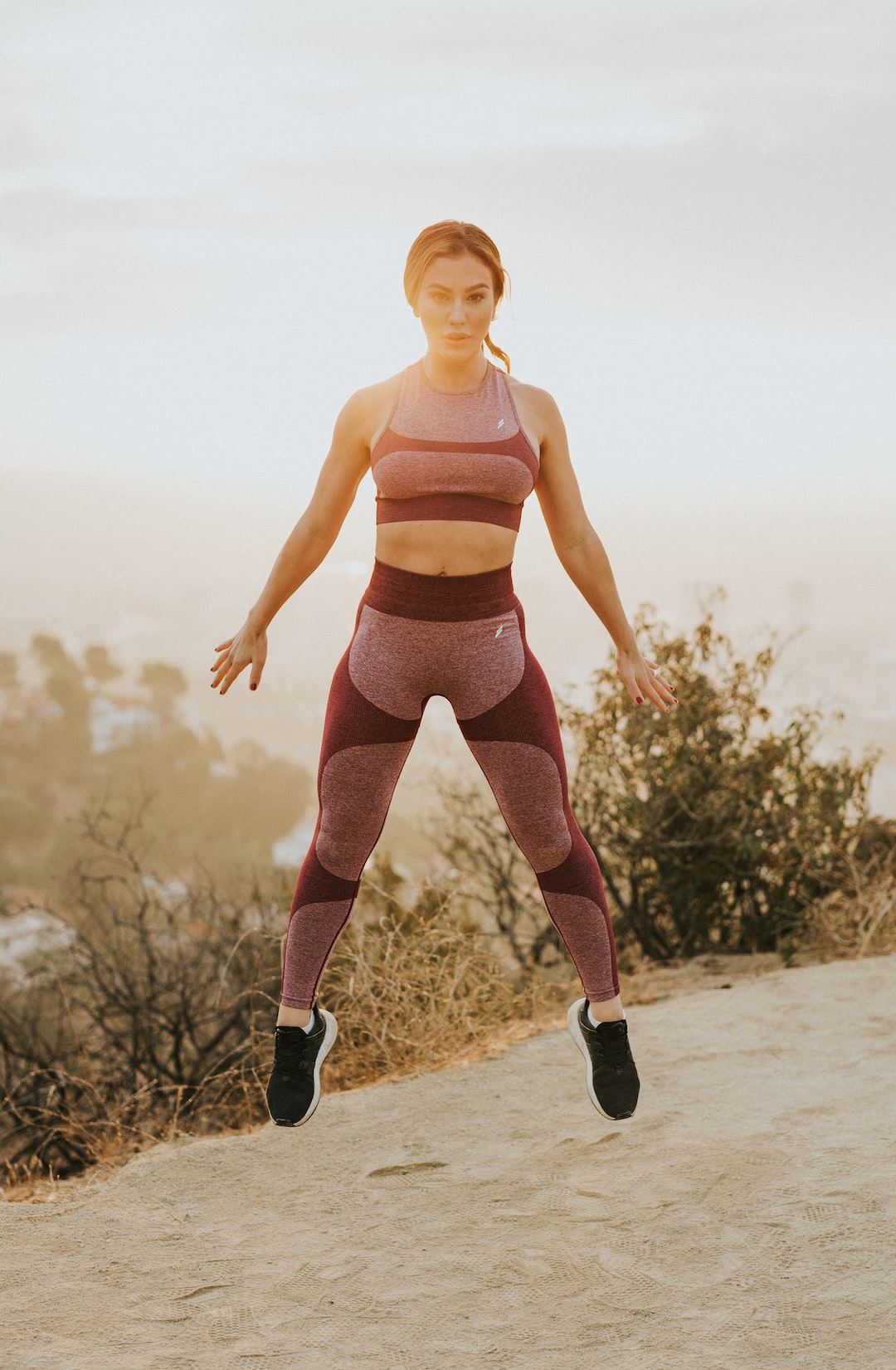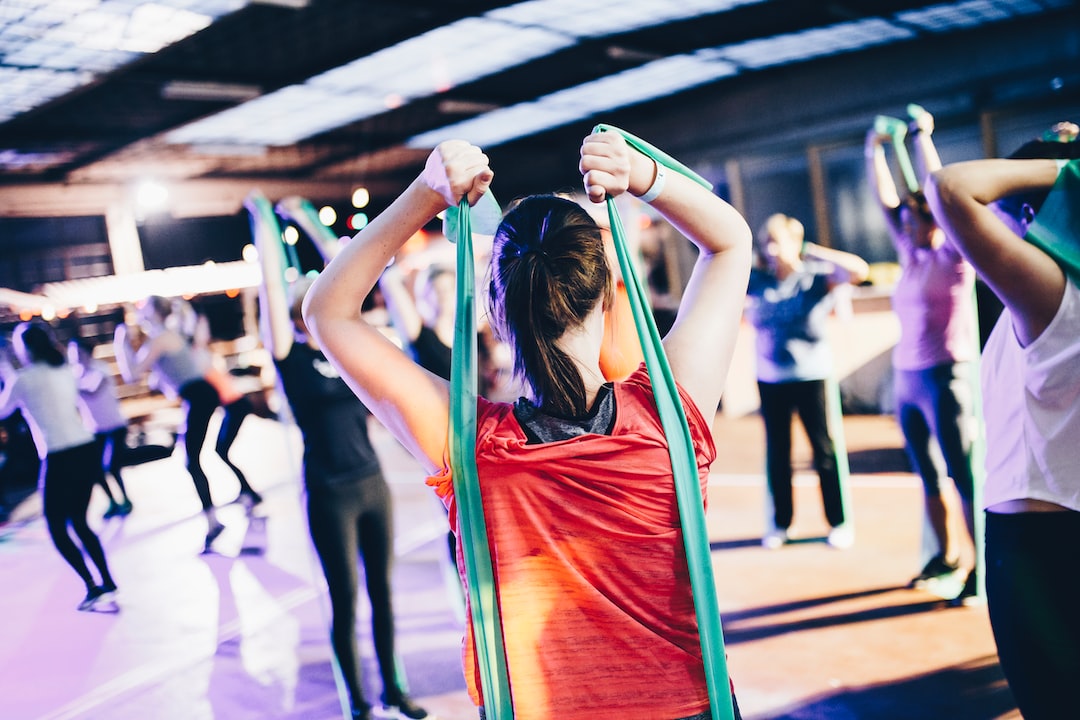Introduction
Designing a website for fitness can be a challenging yet rewarding process. It requires a great deal of thought and creativity to create a website that effectively informs and engages the desired audience. This article will provide an overview of the basics of designing a website for fitness, including topics such as layout, colors, images, and content.
Layout
The layout of a fitness website is important for creating a user-friendly experience. The layout should incorporate elements that encourage visitors to navigate through the website easily and efficiently. This includes making the navigation bar clearly visible, ensuring that content is well organized and easy to scan, and making text legible and properly formatted.
Colors
Choosing the right colors for a fitness website is essential for creating an inviting and professional look. Choose colors that are appropriate for the type of business, such as bright and cheerful colors for a yoga studio or more subdued colors for a personal training business. Consider the color palette carefully and ensure that the colors used are balanced and not overwhelming.
Images
Images are a key element of any website and they are especially important for fitness websites. Images can be used to showcase the services offered by the business, show off the facility, and even inspire potential clients to take action. When selecting images, choose ones that are visually appealing and high quality. Additionally, be sure to include images of people who accurately reflect the target demographic.
Content
Creating content for a fitness website can be a daunting task. However, it is essential for engaging visitors and converting them into customers. Content should include detailed descriptions of services, facility tours, customer reviews, and frequently asked questions. Additionally, consider including videos, which can be a great way to showcase the facility and demonstrate exercises.
Understanding Design for Fitness Websites
When it comes to designing a website specifically for fitness, there are certain considerations that must be taken into account to ensure its success. From capturing the attention of viewers and establishing a brand identity to having the appropriate navigation and user experience, these ar e all elements which must be included in a successful design.
e all elements which must be included in a successful design.
The key to any good website is great visuals. As many people have shorter attention spans, having visually appealing images and graphics can help to keep users engaged. Additionally, customers need to feel like they’re being appreciated and that their efforts are being rewarded. That’s why having a visually pleasing website for a fitness business is essential. Fitness logos, colors, and fonts should all be kept consistent in order to create a unified look and feel that reflects the company’s brand.
The website’s layout and navigation is also critical when designing a website for fitness. Users need to be able to easily find the information they’re looking for. This requires the navigation to be intuitive so that visitors don’t have to search for what they need. Navigation should be organized into sections that follow an intuitive flow. Pages should be able to load quickly and be optimized for all different types of devices, as this will make it easy for users to read and navigate the website regardless of what device they’re using.
Furthermore, attention needs to be paid to the content of the website. The content should be carefully crafted in order to accurately convey the brand’s message and values. For example, fitness websites need to convey a sense of empowerment, health, and wellness in order to attract potential customers. Content should be focused on providing helpful information about the products and services offered by the business, as well as providing motivation to help users reach their goals.
In addition, the website should be designed with an SEO strategy in mind. Search engine optimization (SEO) enables a website to rank higher in search engine results pages (SERPs). Using keywords and phrases that are relevant to the business’s services and products, as well as optimizing page titles, heading tags, meta descriptions, and URLs, can help to improve the website’s visibility and drive more organic traffic.
Social media integration is another important element to consider when designing a fitness website. Many customers are likely to use social media to interact with the business and its products and services or to stay up-to-date on new offerings. Having a presence on multiple platforms will enable the business to engage with its customers more effectively.
Design Best Practices for Fitness Websites
For a fitness website to be successful, it is important to take into consideration the various best practices for website design. This starts with ensuring that the website is responsive, meaning that it can be viewed on screens of all different sizes. Additionally, the website should be optimized for mobile devices, as this accounts for a significant portion of web traffic. The website should also be fast-loading, as this will help to keep users engaged.
It is also important to utilize a wide color palette in order to capture the attention of visitors. Colors can  be used to communicate both brand values and the feelings associated with certain activities. Similarly, images should be carefully chosen to reflect the mood that the website creator wishes to convey. Additionally, typography should be chosen to ensure that the website is legible and readable, while still maintaining a cohesive look and feel.
be used to communicate both brand values and the feelings associated with certain activities. Similarly, images should be carefully chosen to reflect the mood that the website creator wishes to convey. Additionally, typography should be chosen to ensure that the website is legible and readable, while still maintaining a cohesive look and feel.
Designing for the user experience is also critical. A website should be designed with the user in mind. This means that the navigation should be intuitive, the structure should be logical, and the content should be easy to find. Additionally, website forms should be optimized, as this will help to ensure that the user is able to easily fill them out. This is especially true for ecommerce websites, as customers will need to enter information about their payment and shipping information.
Finally, analytics should be implemented so that the website can be monitored and data can be collected. By studying data such as pageviews, bounce rate, average session duration, and conversion rate, it is possible to gain insight into how the website is performing and make improvements over time. This will enable the website to provide a better user experience and optimize the website for customer acquisition.
Examples of Successful Fitness Website Designs
To illustrate the importance of implementing the best practices for designing a fitness website, let’s take a look at several examples of successful fitness websites. Patagonia, one of the world’s leading outdoor apparel companies, has done an excellent job of crafting a visually appealing website with an emphasis on its mission and values. Their website features bold visuals and colors, a clear navigation structure, and engaging content.
Another example is Fitbit, a company that specializes in tracking devices and smartwatches. Their website is simple yet effective, with a focus on showcasing their product catalog. The navigation is straightforward and the content is easy to find. Additionally, the website features bright colors and visuals that help to draw the user’s eye and keep them engaged.
Finally, the website for CrossFit is another perfect example of how to design a fitness website. The website is focused on showcasing the CrossFit brand while also providing helpful information and resources. The website utilizes bright colors, bold visuals, and a straightforward navigation structure, all of which help to create an inviting and engaging online experience.
Conclusion
When it comes to designing a website for fitness, there are certain elements that need to be taken into account. From creating an attractive visual aesthetic to optimizing the user experience, these are all key components that will contribute to a successful website. Additionally, it is important to consider best practices such as utilizing a wide color palette, considering the user experience, and implementing SEO. Finally, taking inspiration from successful fitness websites can provide helpful guidance when creating your own website.
1. Use a mobile-friendly design: Make sure that your website is optimized for mobile devices and looks equally good on desktop computers, tablets, and smartphones.
2. Utilize a Responsive Design: Ensure that your website responds to different screen sizes without a loss of content.
3. Feature custom graphics: Custom graphics instantly make your website look more professional and can be used to highlight key features or products.
4. Include « Call to Action » buttons: Incorporate simple and effective calls to action such as « Sign up today » or « Learn More » to encourage visitors to take the next step.
5. Incorporate interactivity: Add an element of fun and engagement by incorporating interactive elements such as forms, quizzes, polls, and surveys to help capture user data and encourage conversions.
6. Showcase user reviews: Positive user reviews can generate more trust with your potential customers, so be sure to display them prominently on your website.
7. Focus on SEO optimization: Utilize relevant keywords to ensure that your website is optimized for search engine algorithms.
8. Keep it simple: The key to a successful website is an easy-to-navigate design that allows visitors to quickly find what they’re looking for.
To go fruther on the topic
If you’d like to explore more on the topic of The basics of designing for fitness websites, we recommend the following litterature:
1. Web Design for Dummies by Lisa Lopuck
2. Web Design with HTML and CSS: Visual QuickStart Guide by Elizabeth Castro
3. Web Design in a Nutshell: A Desktop Quick Reference by Jennifer Niederst Robbins
4. Responsive Web Design with HTML5 and CSS3 by Ben Frain
5. Don’t Make Me Think, Revisited: A Common Sense Approach to Web Usability by Steve Krug
6. The Principles of Beautiful Web Design by Jason Beaird
7. Designing Interfaces: Patterns for Effective Interaction Design by Jenifer Tidwell
8. Designing for the Web by Mark Boulton
9. Designing With Web Standards by Jeffrey Zeldman
10. Mobile Design and Development: Practical Concepts and Techniques for Creating Mobile Sites and Web Apps by Brian Fling


